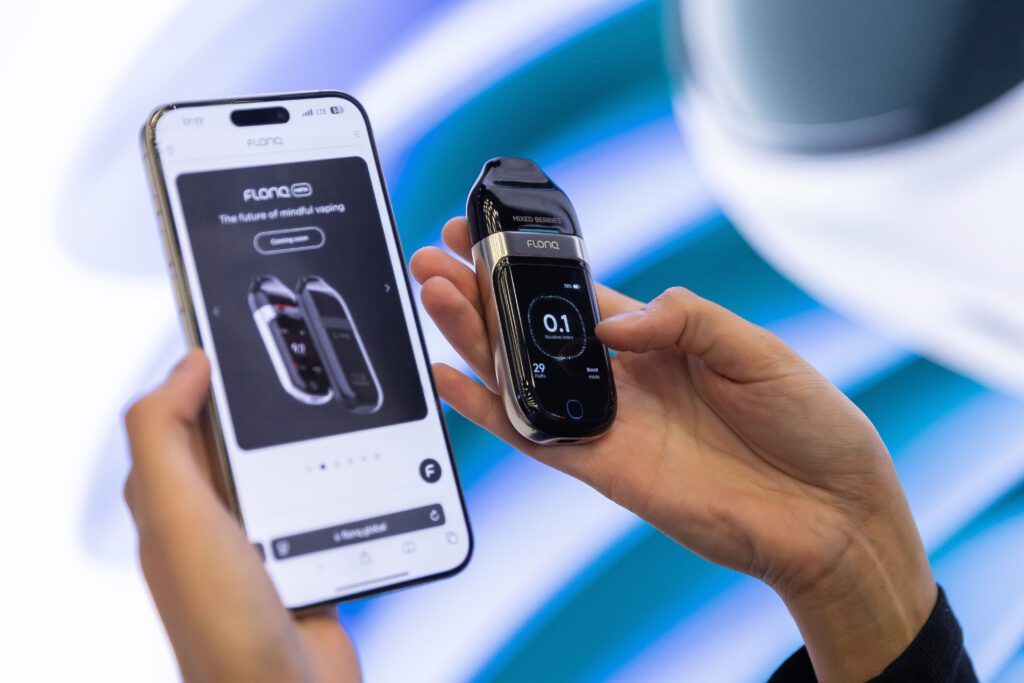Flonq introduces its solution to address the lack of ability to control nicotine consumption.

Contributed
A range of studies suggests that e-cigarettes can be an effective tool for helping conventional tobacco smokers quit. However, once individuals switch from tobacco smoking to e-cigarettes, there is no clear baseline for before and after comparison, since most users are unable to track how frequently they vape. Vape companies and manufacturers should propose solutions as part of their responsibilities. How can this be achieved? Alfabet Labs, the company behind the Flonq brand, offers its perspective on this issue.
One of the most recent studies on the effectiveness of electronic cigarettes as a smoking cessation tool was conducted by the Cochrane Database of Systematic Reviews. The report concluded that there is high-certainty evidence that nicotine e-cigarettes are more effective than other methods, such as nicotine-replacement therapy—like patches or gum.
However, the goal after switching to e-cigarettes is to control, decrease or quit nicotine consumption. This presents a challenge, as it’s hard to accurately measure e-cigarette use to control nicotine intake. The main issue is figuring how to measure usage intensity, given the wide range of products and user behaviors.
So what should be the basis for comparing the consumption dynamic after switching to e-cigarettes? Should industry professionals measure the number of times an e-cigarette is used per day, the number of puffs taken, or the volume of e-liquid consumed? A consensus on measurement standards has yet to be established.
Vaping vs. cigarettes
The Eurobarometer study, which revealed key trends in smoking behavior in the EU, clearly illustrates the issue of accurate vape measurement. According to the report, the average daily consumption of tobacco was slightly higher than 14 units.
The data also reveals insights into e-cigarette usage. Among smokers who use e-cigarettes, the range resulted to be the following: 60 percent reported using them less than 10 times per day, 28 percent less than 20 times and approximately 11 percent over 21 times. A similar pattern was observed among ex-smokers who used e-cigarettes.
However, what is particularly important is that nearly half of the respondents reported being unsure about their previous daily usage of e-cigarettes. This uncertainty among former smokers about their past usage highlights the need for more research in this area.
Measuring consumption
The Nicotine & Tobacco Research journal conducted a study asking young adults who vape to provide suggestions for improving the scientific measurement of vaping.
Participants reported that they don’t actively monitor the number of puffs they take during a vaping session or over the course of a day. One participant remarked, “I would never count how many [puffs] I take.”
Additionally, several respondents noted that it is challenging for them to estimate how many times they vape during the day. They also expressed uncertainty about the amount of nicotine they consume per session. One participant said: “I wish that I could measure how much I’m [vaping]. I have no idea how much nicotine I’m taking in … I’m probably taking in more than a pack [of cigarettes] a day.”
Another respondent added, “No one can count how many times or how many hits in an hour. It’s pretty subconscious.”
It’s clear that using vapes to quit smoking or manage nicotine dependence won’t be effective without devices that include features for monitoring consumption. Whether it tracks the number of puffs, daily usage or other patterns, the device should provide a comparison point for the user.
Practical solutions
The Flonq vaping brand recently introduced its solution to address the lack of controlling the nicotine consumption in the industry. The brand presented META by Flonq—an advanced pod system designed for tracking and managing nicotine use. The device features a wide range of features that respond to the market demand for consumption transparency.

- The real-time tracking system
The device monitors data such as the number of puffs, usage time and nicotine index level, all displayed on a single touch screen. The device collects data throughout the entire period of vape usage.
- META Smart AI assistant
The integrated AI assistant helps to analyze nicotine usage patterns. With built-in behavioral therapy techniques, META is designed to offer personalized guidance.
- Nicotine index
A key highlight of the device is the nicotine index developed by Flonq, which measures estimated nicotine saturation and determines the optimal timing for the next puff. It updates in real time, allowing users to follow a suggested plan to reduce nicotine intake or quit smoking.
“Whether you want to vape, reduce your nicotine intake or move toward a smoke-free life, the choice is yours,” says Marlen Nazarov, Flonq’s founder and CEO. “Our company’s focus is to respect your decision to vape while encouraging mindful choices.”

Overall, it seems that META offers consumers a straightforward and user-friendly way to track their nicotine usage—something the market needs to implement right away. This can be achieved through smart technologies such as integration with mobile apps, Bluetooth connectivity and alerts to notify users of excessive consumption. As the industry evolves and expands, these efforts will be essential in helping users manage their nicotine intake, make positive changes to their health and, what’s also important—to improve the industry’s overall image.











